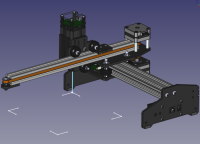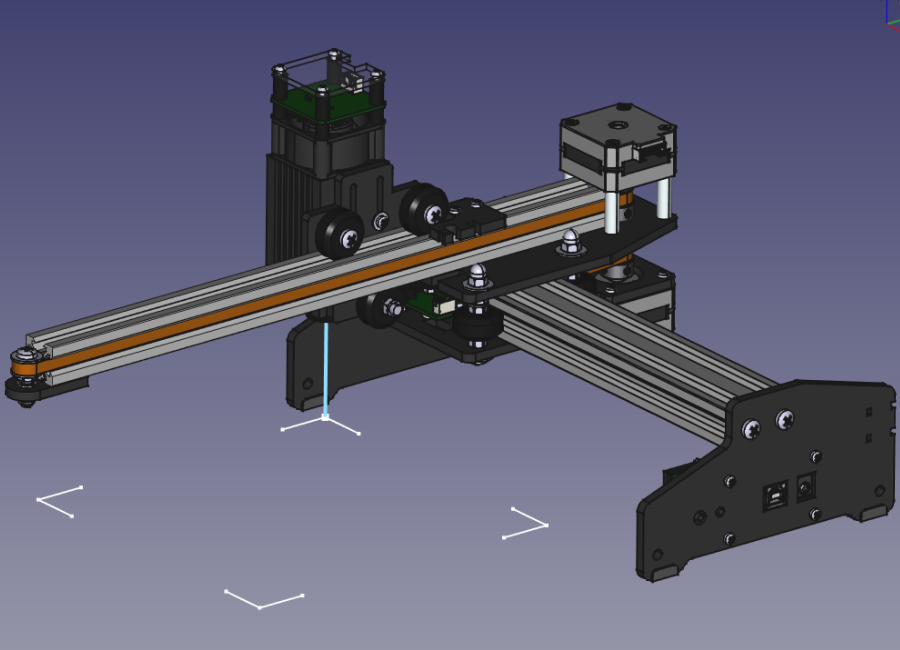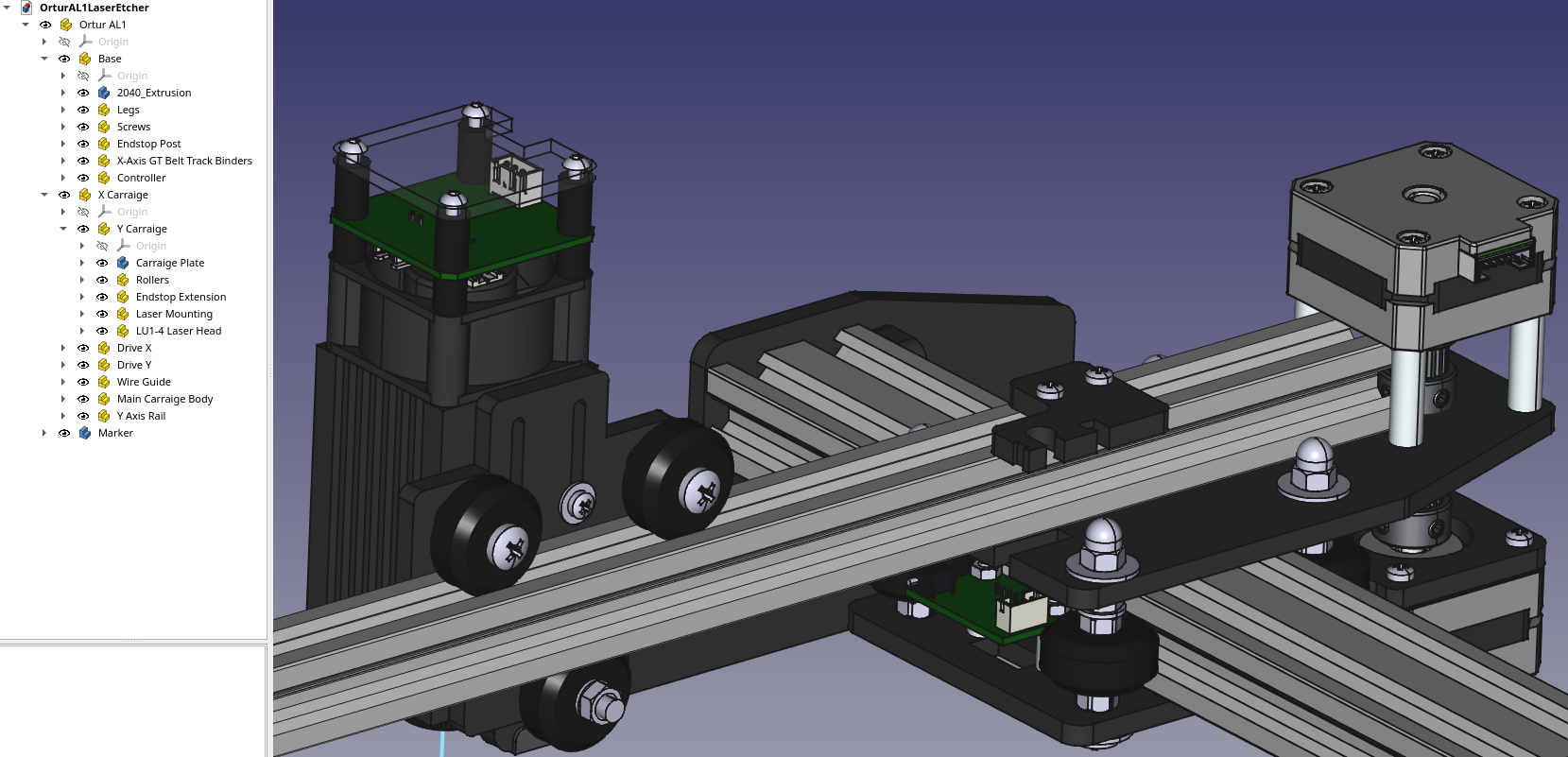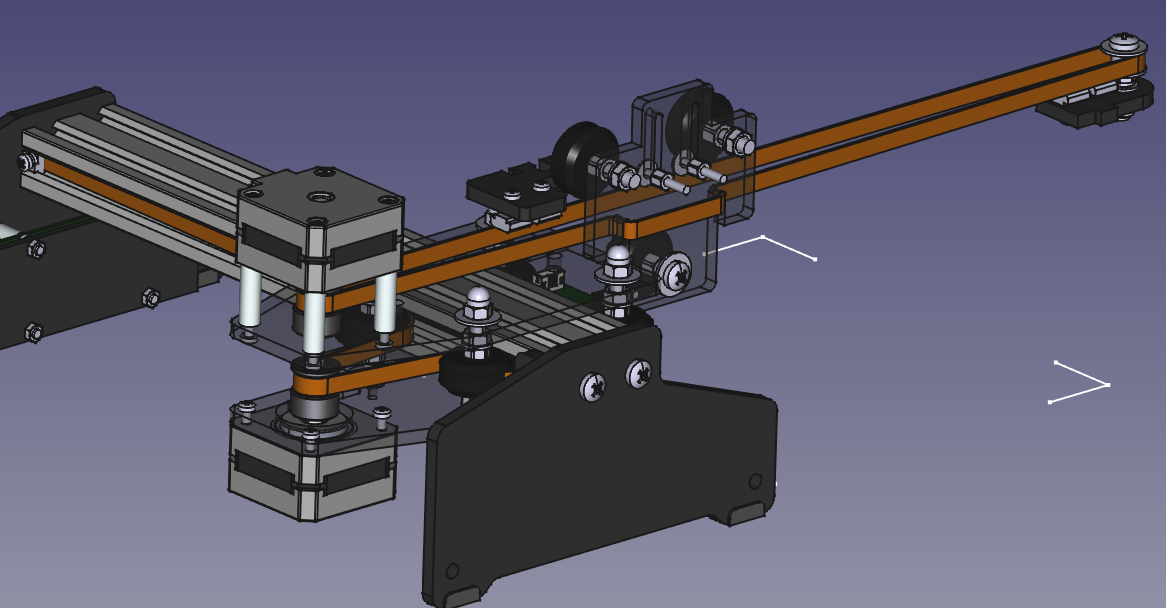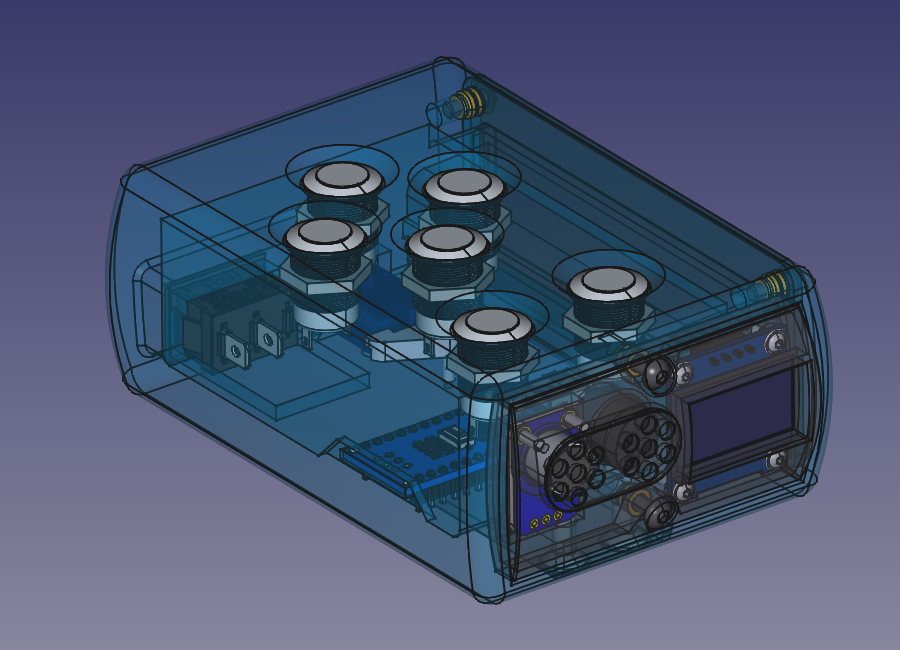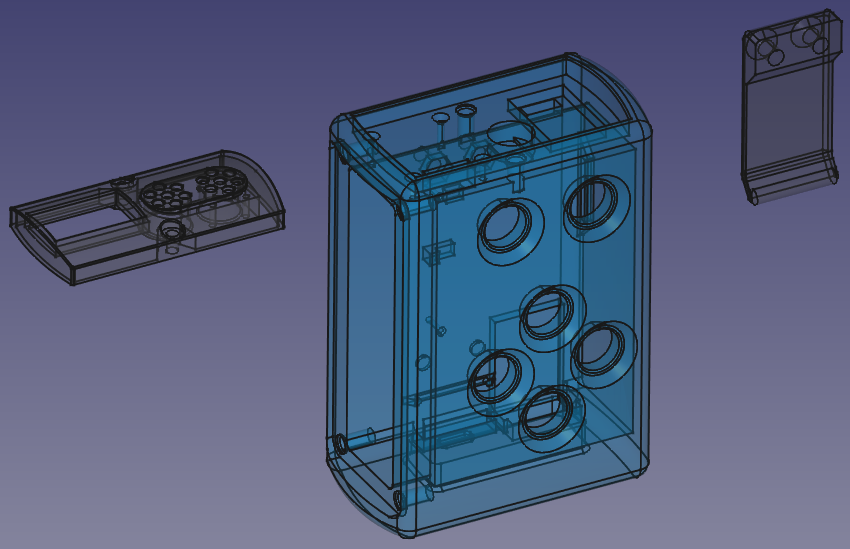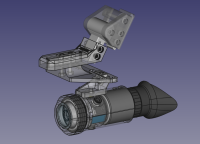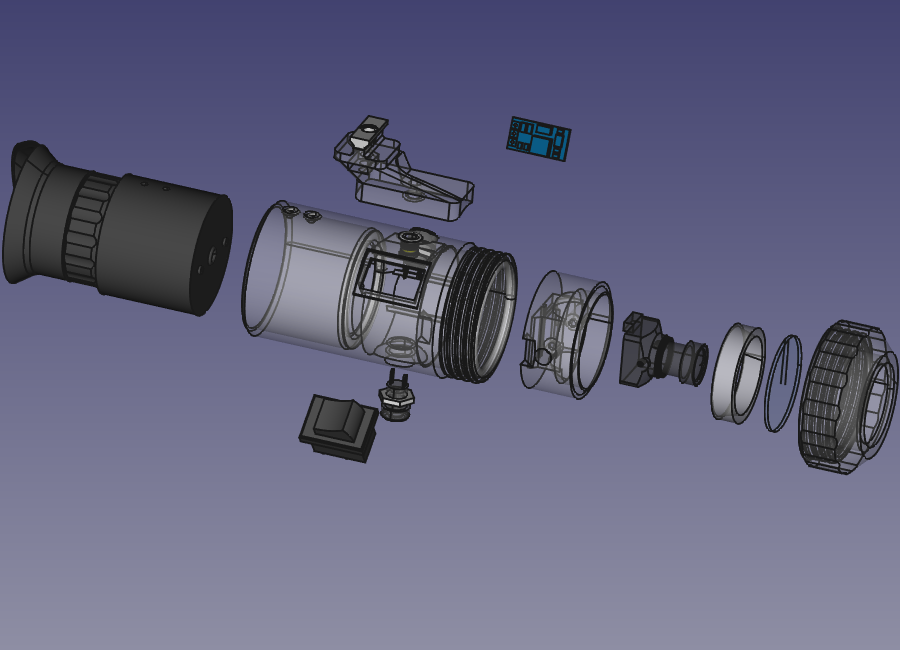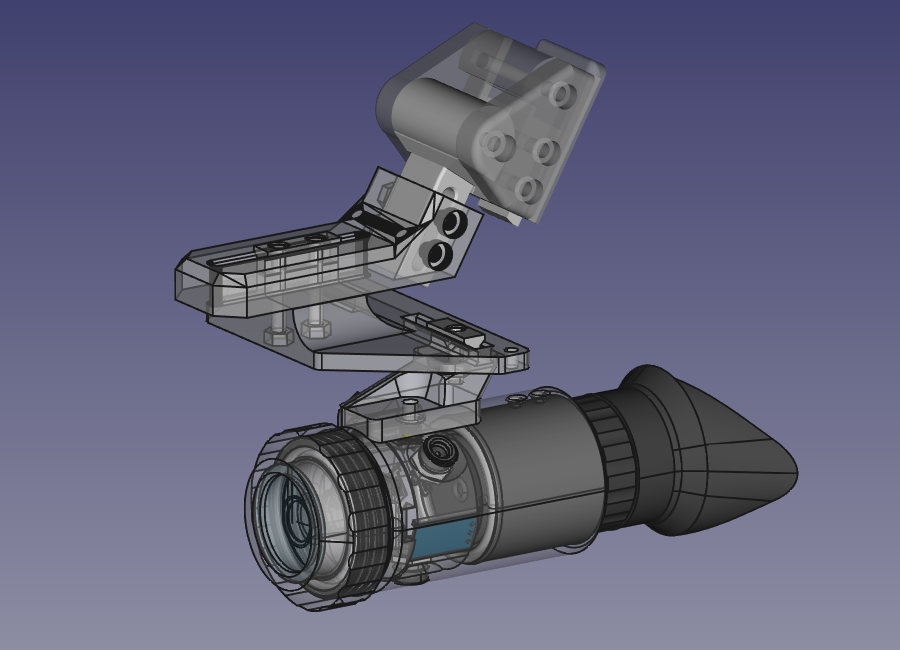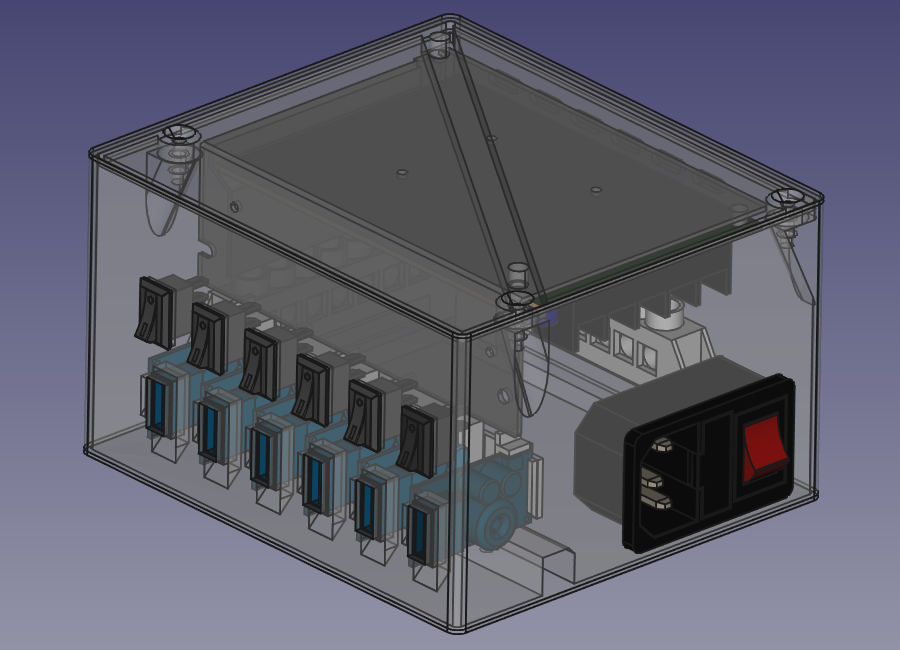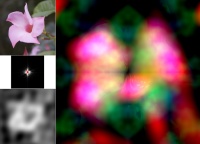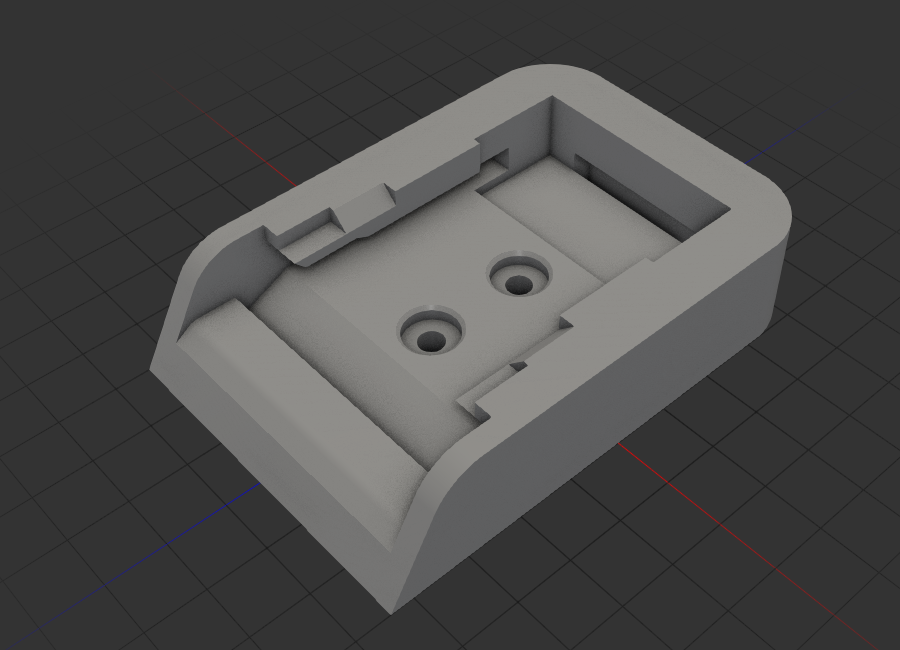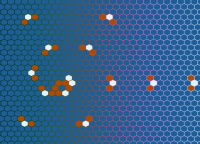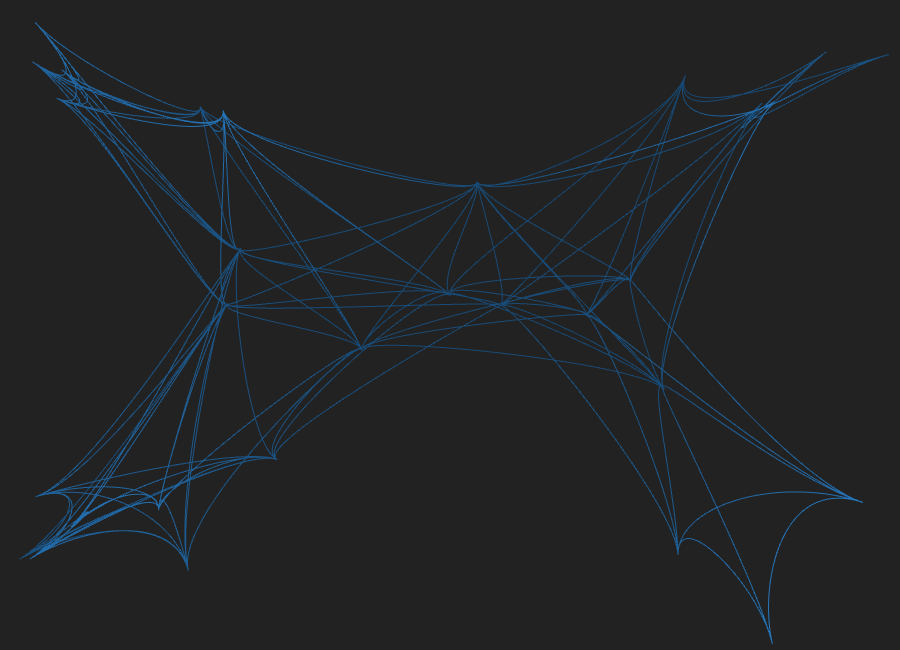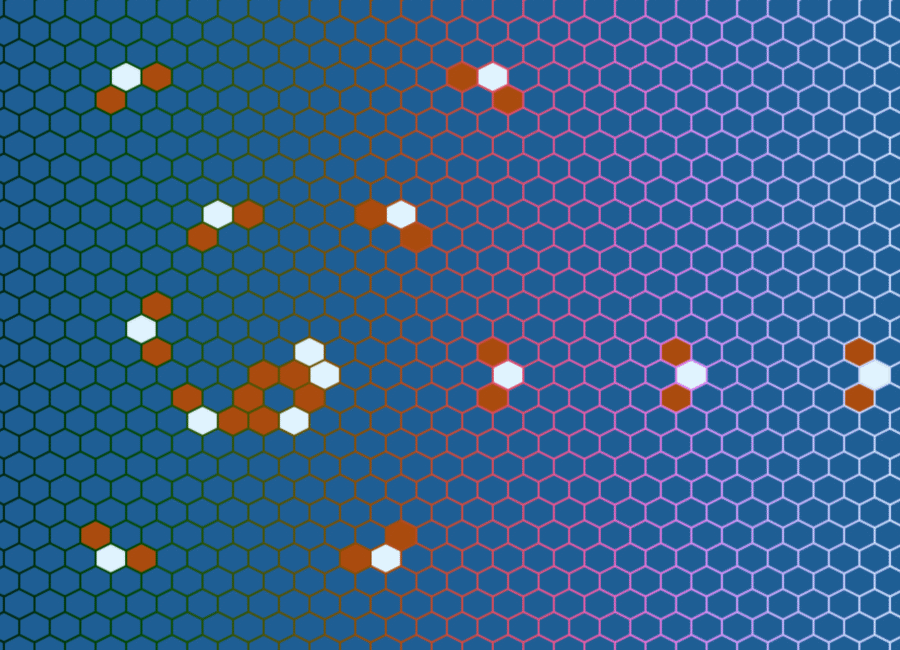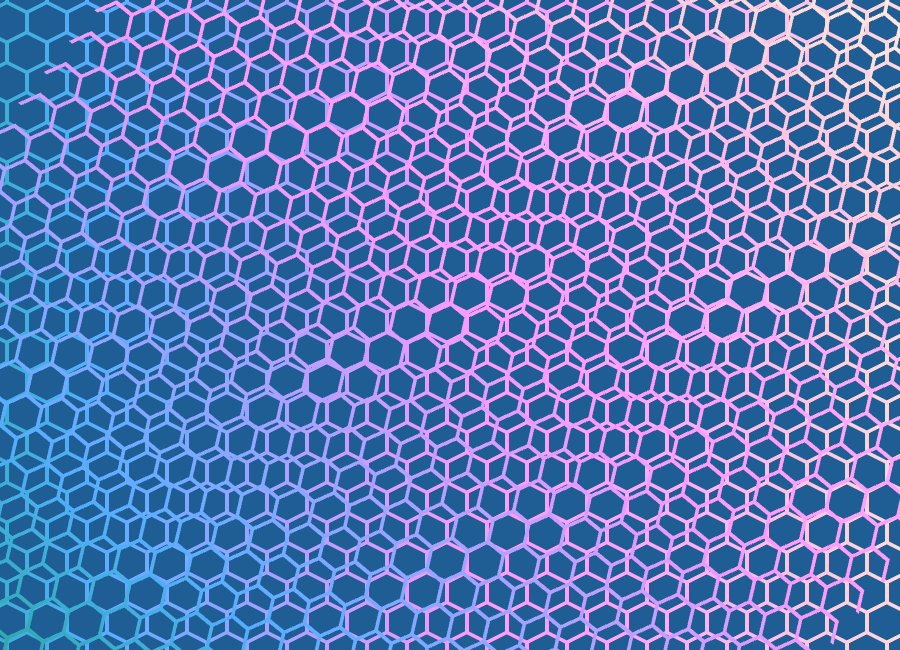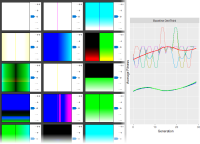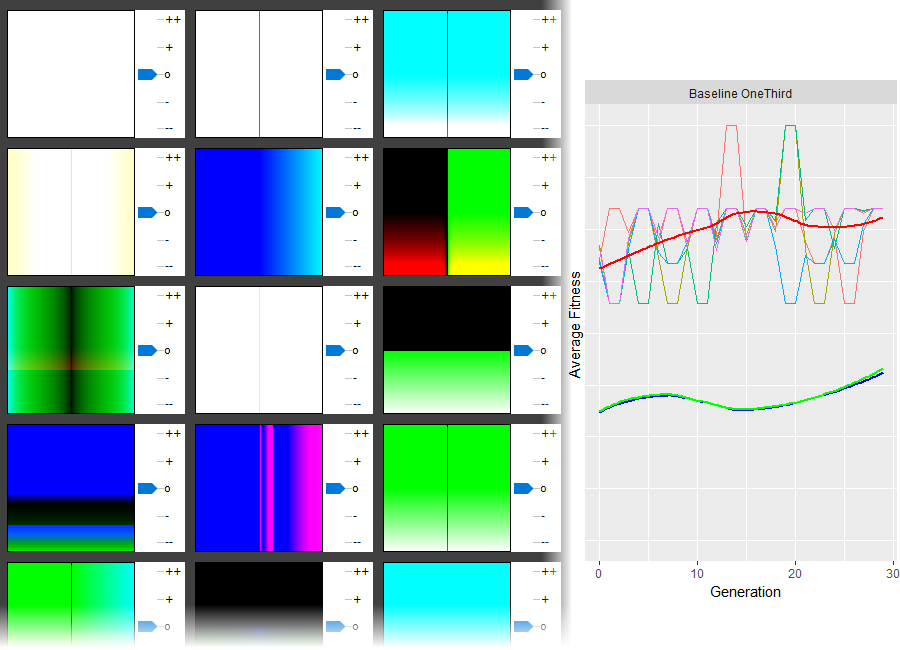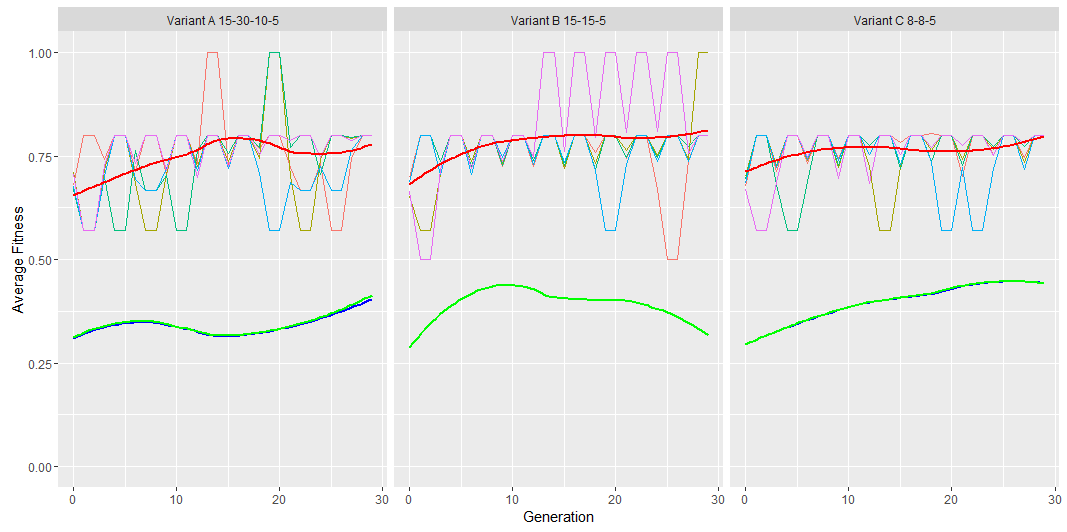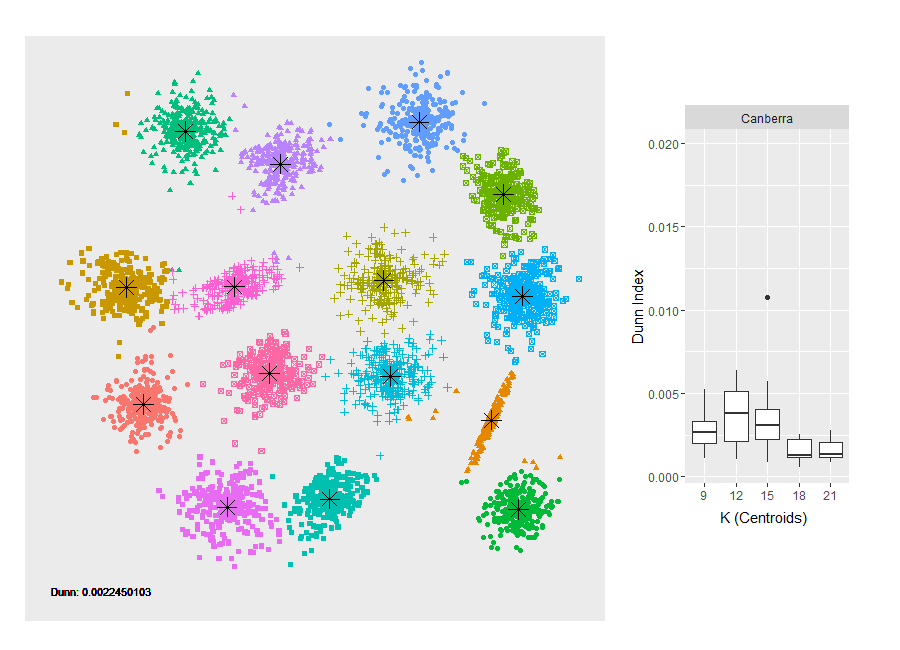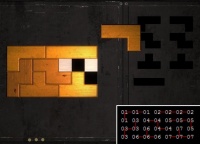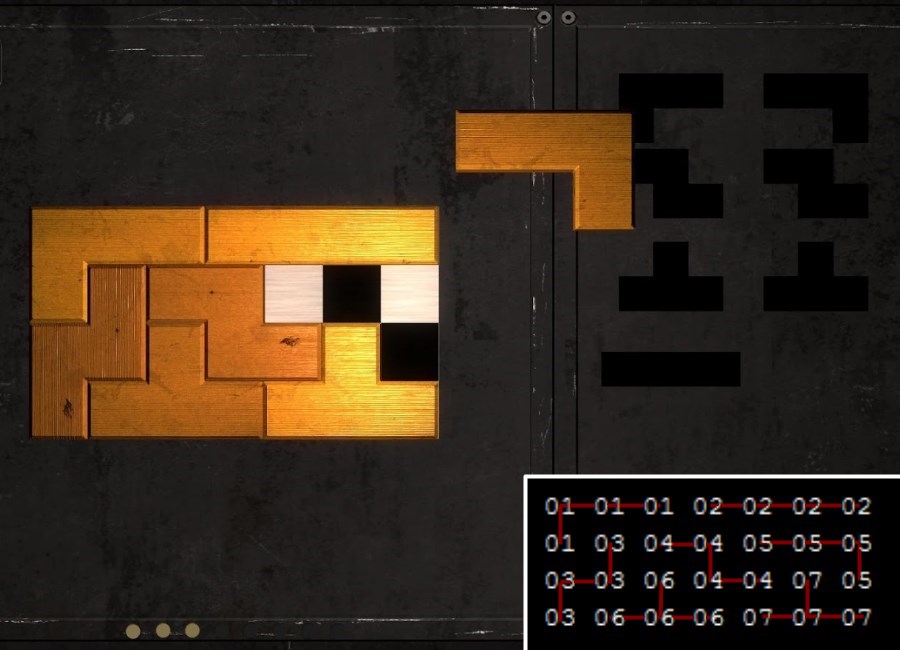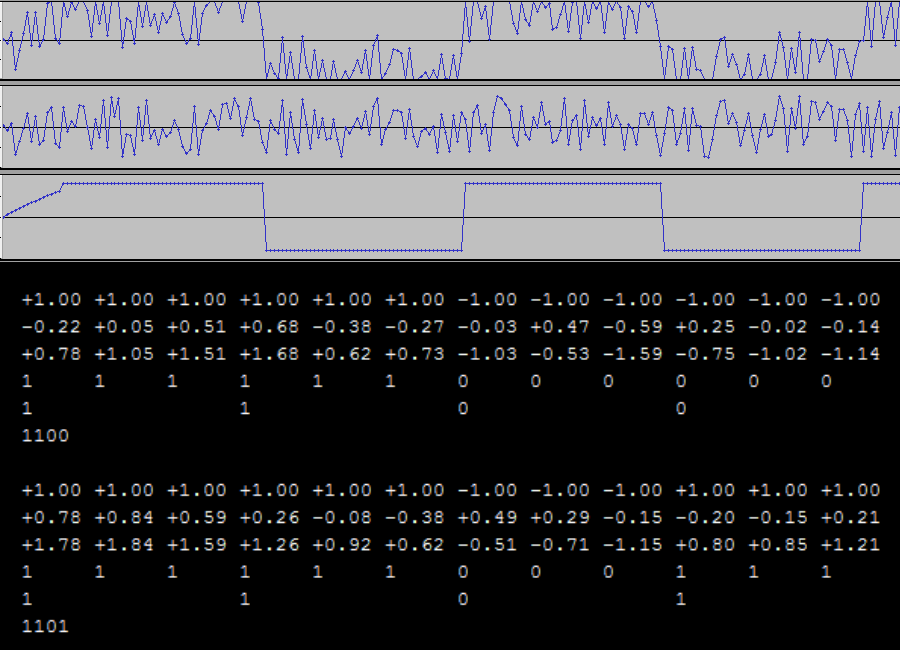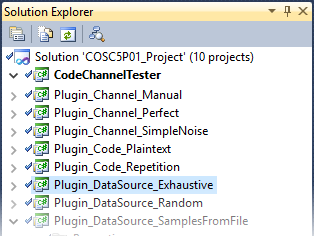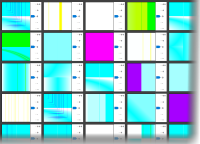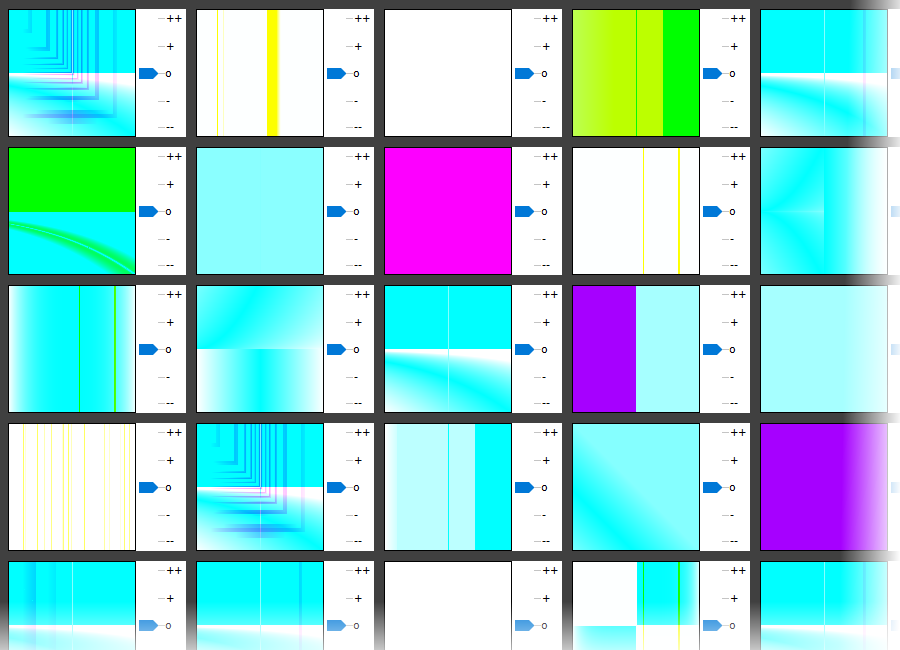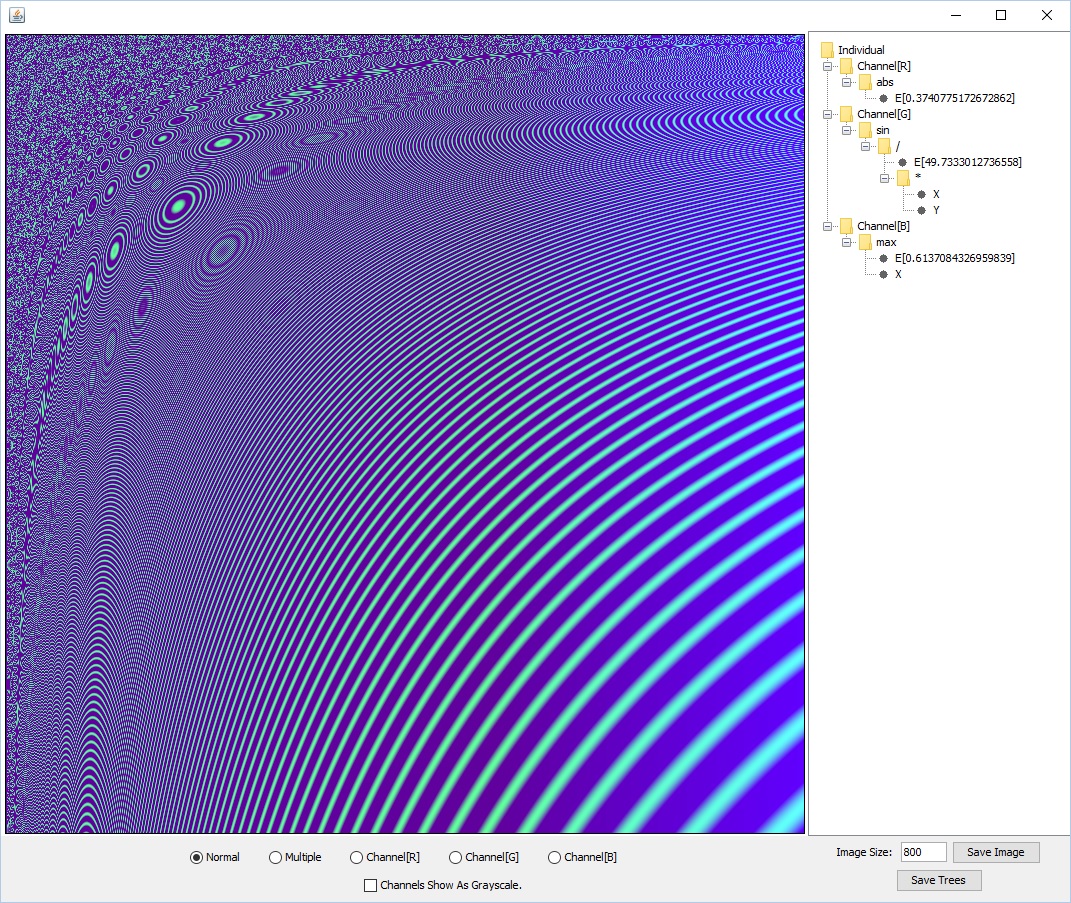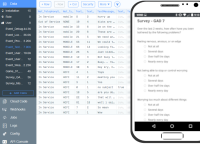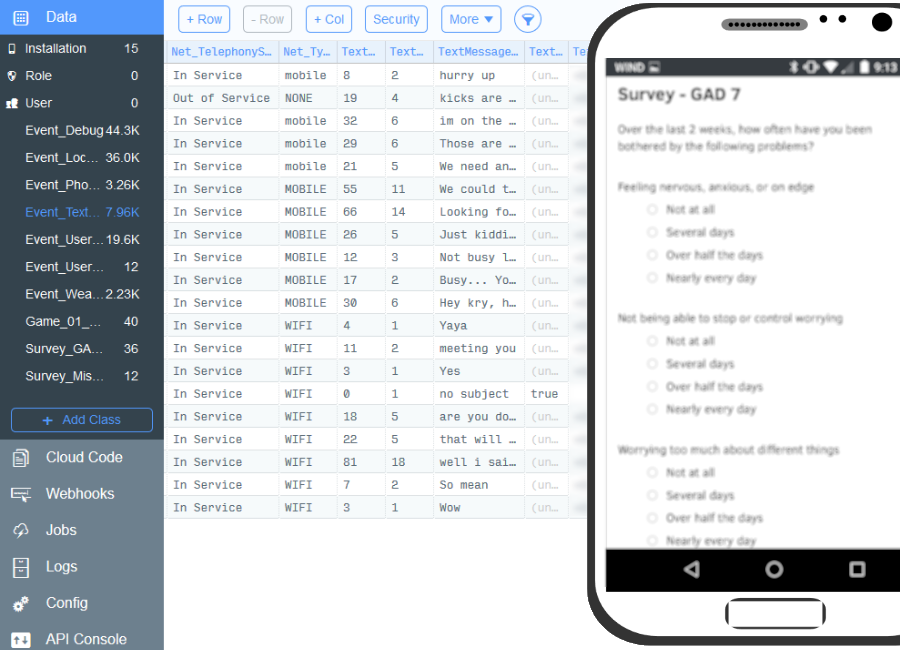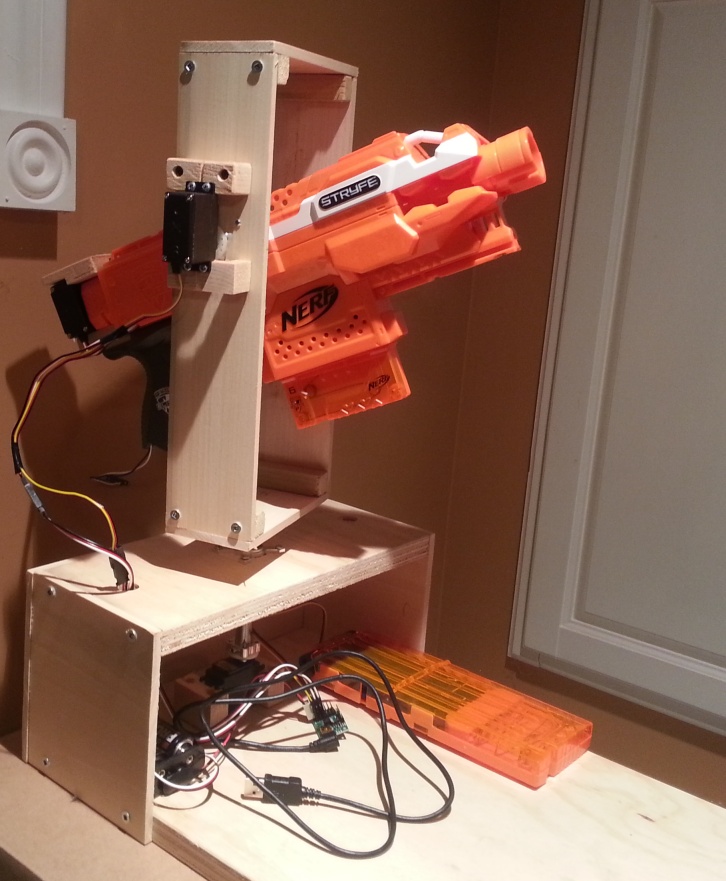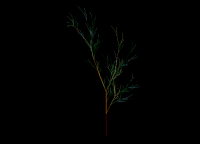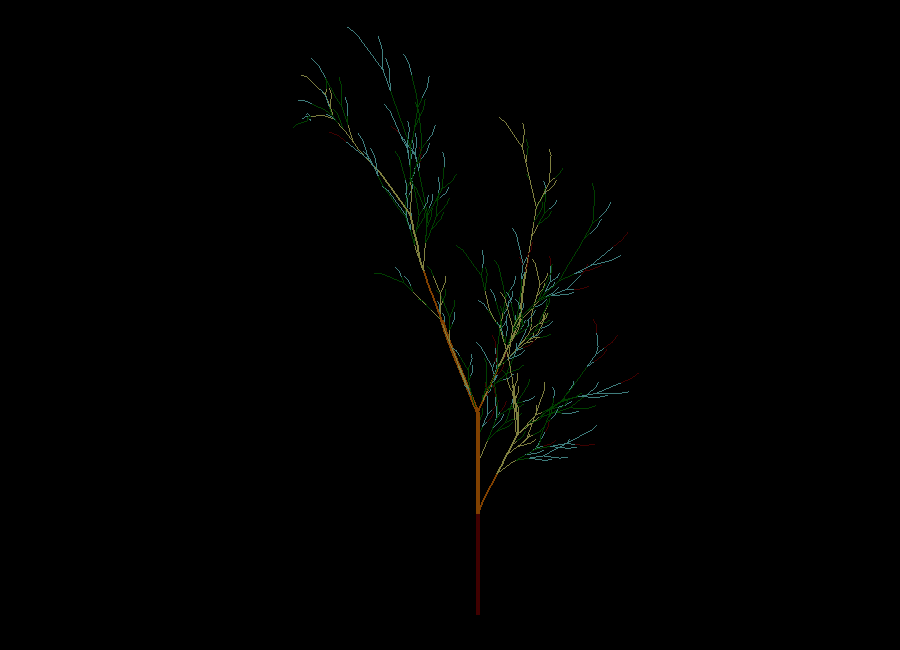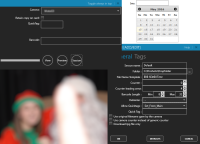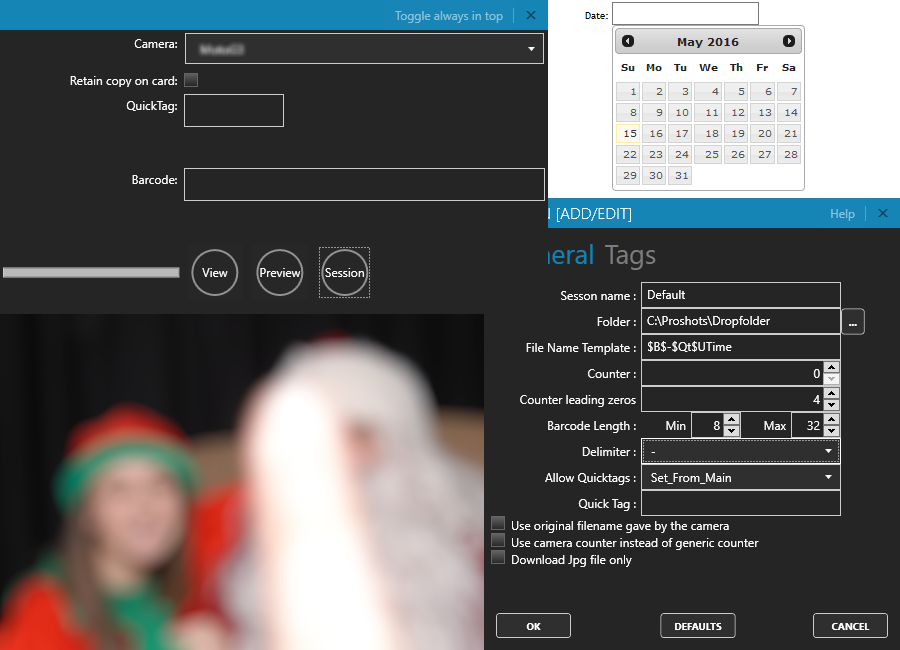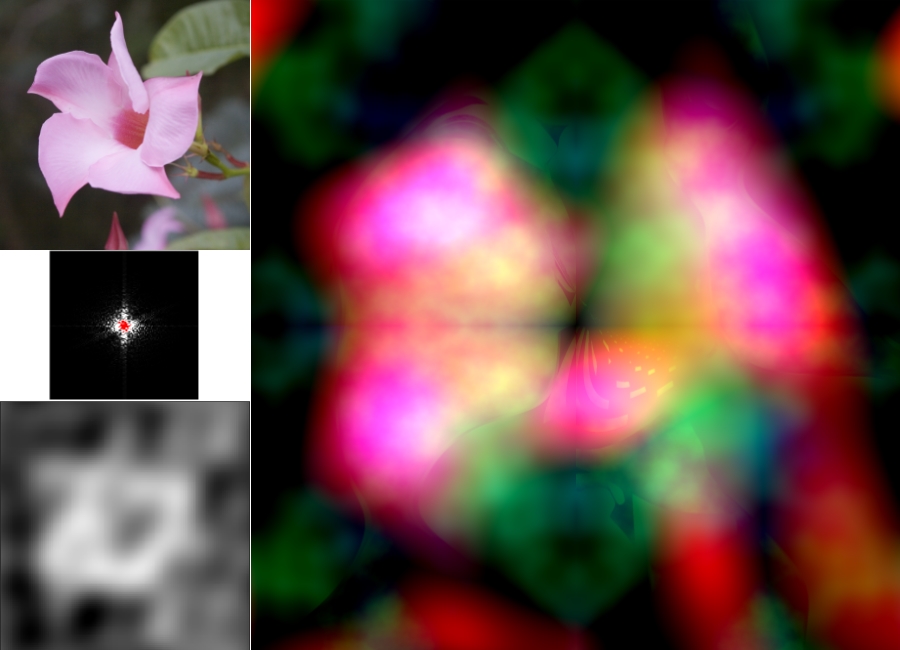
After a number years of part-time study in evolutionary computation and art systems, the findings
of an extensive exploration into compositional guidance through spatial-frequency measures has
been presented in the MSc. thesis Image Evolution Using 2D Power Spectra.
Evolutionary art systems have shown success in producing novel variations of existing images,
particularly with respect to non-photo-realistic filters, colour properties, and aesthetic
models. With the assistance of Dr. Brian Ross,
methods for evolutionary guidance of spatial properties were explored, expanding upon measures
showing promise in database retrieval and classification applications based on frequency / power
spectral analysis. Metrics were assessed for their ability to capture spatial / compositional
attributes from existing target images and guide evolutionary candidates towards new images with
similar properties.
A evolutionary art system was produced with tuned measures allowing for reasonable replication
of spatial attributes in a number of target images classes.
Abstract:
Procedurally generated textures have seen use in many applications, are a high-interest
topic when exploring evolutionary algorithms, and hold a central interest for digital art.
However, there is an existing difficulty in finding suitable heuristics for measuring
perceived qualities of an image. Particular difficulty remains for quantifying aspects of
style and shape. In an attempt to bridge the divide between computer vision and cognitive
perception, one set of proposed measures from previous studies relate to image spatial
frequencies. Based on existing research which uses power spectral density of spatial
frequencies as an effective metric for image classification and retrieval, we believe this
measure and others based on Fourier decomposition may be effective for guiding evolutionary
texture synthesis. We briefly compare some alternative means of using frequency analysis to
guide evolution of shape and composition, and refine fitness measures based on Fourier
analysis and spatial frequency. Our exploration has been conducted with the goals of
improving intuition of these measures, evaluating the utility of these measures for image
composition, and observing possible adaptations of their use in digital evolutionary art.
Multiple evolutionary guidance schemes with consideration of the spatial frequencies' power
spectra and phase have been evaluated across numerous targets with mixed results. We will
display our exploration of power spectral density measures and their effectiveness as used
for evolutionary algorithm fitness targets, particularly for basic compositional guidance in
evolutionary art. We also observe and analyze a previously identified phenomenon of spatial
properties which could lead to further consideration of visual comfort and aesthetics.
An analytics pipeline which produced various aggregate measures using Fourier analysis was
developed in Matlab and exported to native C code. We used JNI to offer these tools to our Java
based evolutionary art system, and explored possible image evolutions guided by these measures.

Overcoming numerous issues throughout our exploration, such as producing the correct abstractions
in our analytics, limiting our capture to only the most pertinent data points, and adjusting
restrictions in our evolutionary system, we were eventually able to find suitable tunings for
our system to produce notable results for evolutionary art.
While certain targeted images found varying levels of success, some classes of images were quite
trivial to replicate, and even the particularly difficult targets found interesting and novel r
eproductions.

We were successful in using 2D power spectra as an effective means of guiding evolutionary image
synthesis.
Through comparison of the produced and targeted images through 2D Fourier analysis, we were able
to extract key spatial characteristics and use this data to guide the evolution of images
towards those which share similar compositional traits.
Download Thesis
(Mirror)
Download System
- Date:
February 2018 (Defended)
- Technologies:
Java, MATLAB, JNI, C++, C#
